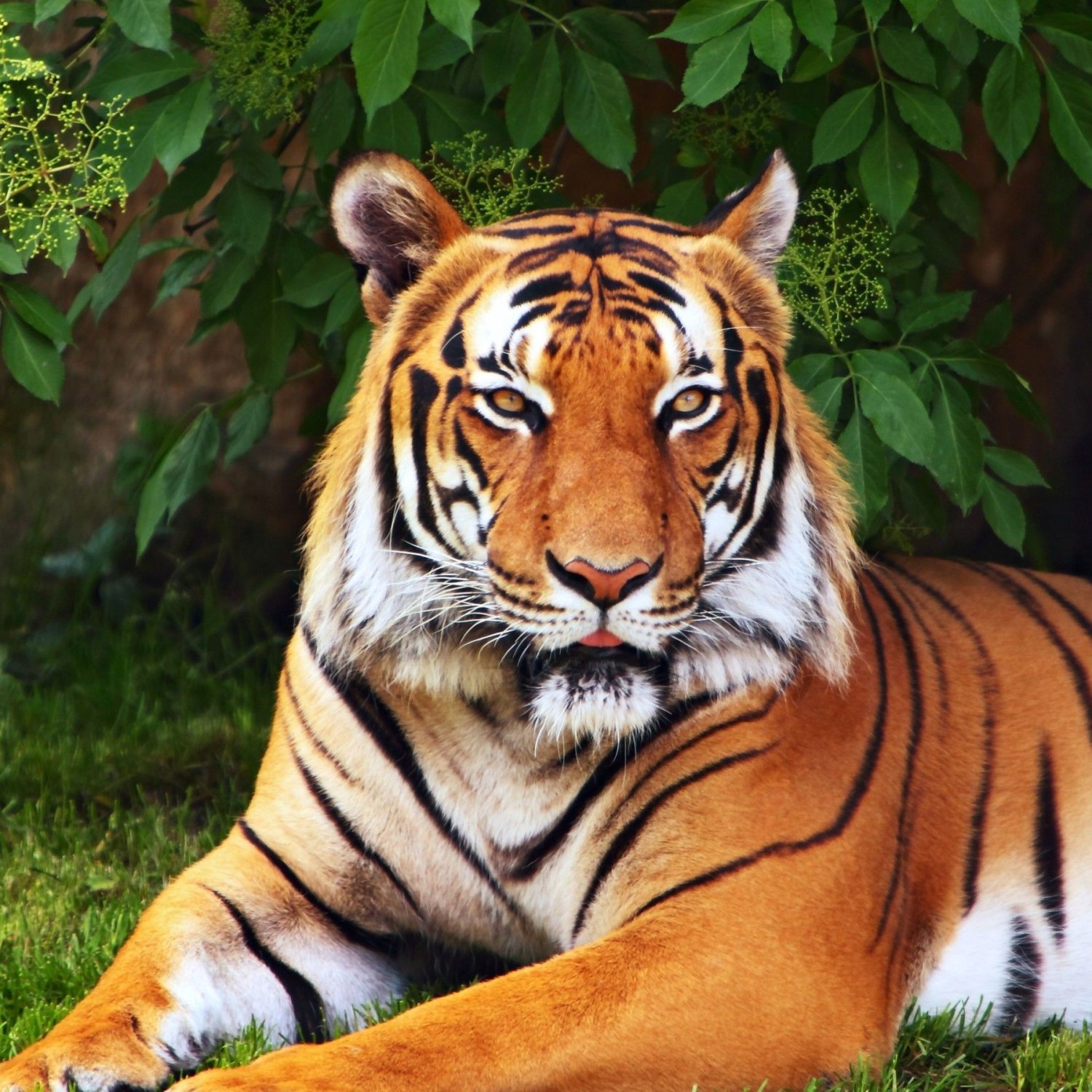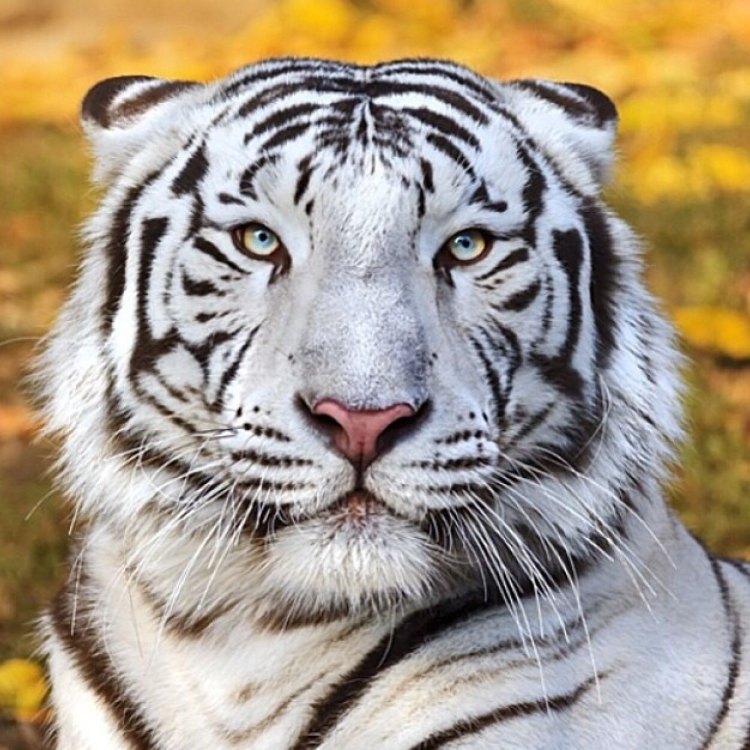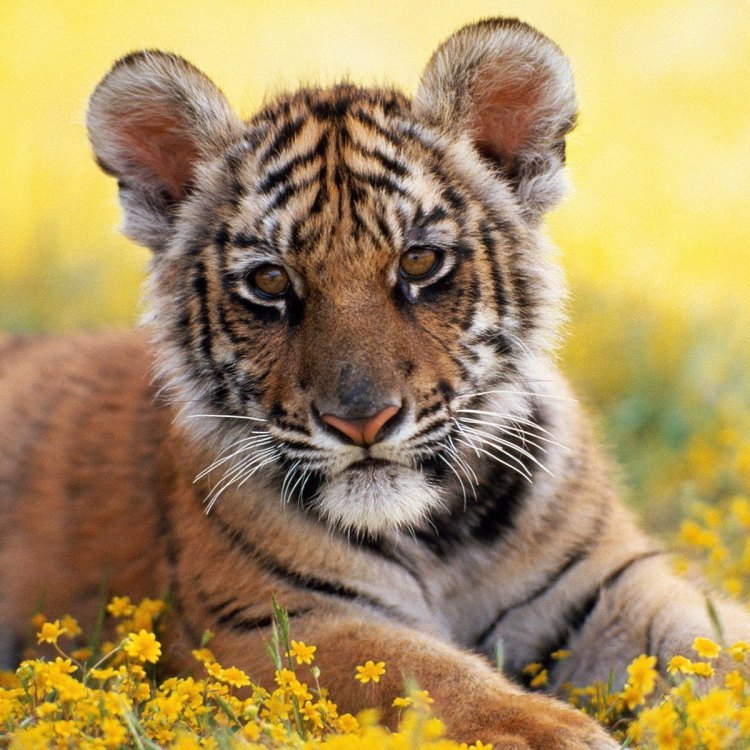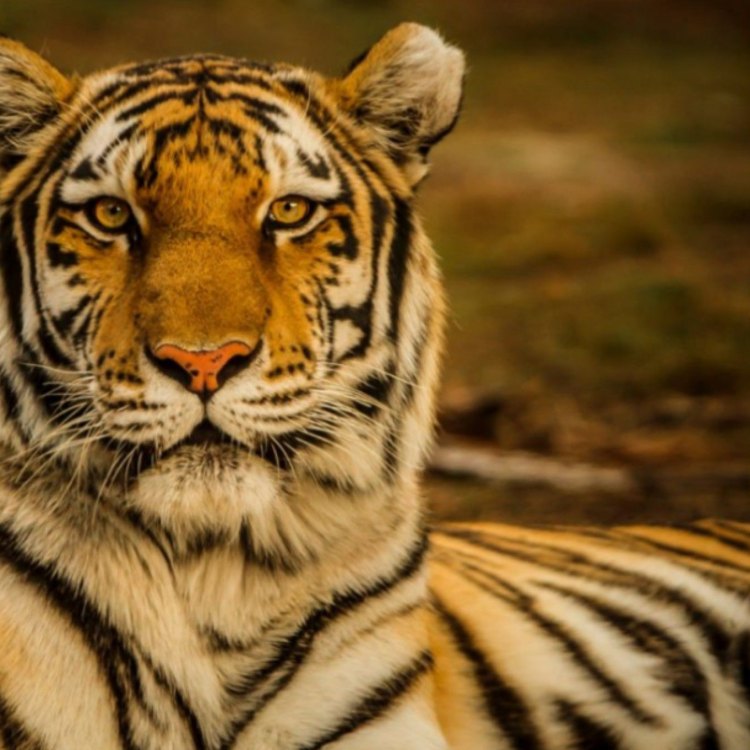
Tiger
6.5 to 9.2 feet
Tigers are majestic creatures, known for their distinctive orange and black stripes. They can grow up to 9.2 feet in length and are found in various countries in Asia. Belonging to the Felidae family, these long and muscular animals are powerful predators. Unfortunately, they are also endangered due to habitat loss and illegal poaching. Let's work together to protect these beautiful animals. #Tiger #EndangeredSpecies #WildlifeConservation
Animal Details Summary:
Common Name: Tiger
Kingdom: Animalia
Habitat: Forests, grasslands, mangrove swamps
The Mighty Tiger: An Icon of Power, Beauty, and Survival
The tiger, with its majestic appearance and powerful presence, has captured the human imagination for centuries. Revered as a symbol of strength and beauty, this apex predator has established its place in mythology, folklore, and popular culture. But beyond its portrayal in stories and movies, the tiger is a fascinating creature with unique traits that make it an essential part of our ecosystem.Scientifically known as Panthera tigris, the tiger is a member of the Animalia kingdom, the Chordata phylum, and the Mammalia class Tiger. It belongs to the Felidae family, which includes other big cats such as lions, leopards, and jaguars. With its impressive size and ferocious nature, the tiger is undoubtedly the king of all cats.
Habitat and Distribution
The tiger is a highly adaptable species, and it can thrive in various habitats such as forests, grasslands, and mangrove swamps. This adaptability has allowed it to have a wide geographical distribution, spanning across Asia, from Russia and China to India and various Southeast Asian countries. Historically, tigers were also found in countries like Turkey, Iran, and parts of the Middle East, but due to deforestation and hunting, their numbers have significantly declined in these regions.
Country of Origin and Location
India is considered the birthplace of tigers, and it still has the largest population of this magnificent species. According to the latest census, conducted in 2018-2019, the Indian subcontinent is home to about 2,967 tigers, which accounts for 70% of the global population. Other countries with significant tiger populations include Russia, Indonesia, Malaysia, and Nepal.
Animal Coloration and Body Shape
One of the most distinctive features of the tiger is its striking coloration Tire Track Eel. Its fur is predominantly orange with black stripes, which act as a natural camouflage, helping the animal to blend in with its surroundings. Each tiger's stripes are unique, just like human fingerprints, and they also help to keep track of individual tigers in the wild.
In addition to its vibrant color, the tiger has a long and muscular body, making it one of the largest and strongest members of the cat family. An average adult tiger can weigh anywhere between 200 to 670 pounds, and its body length can range from 6.5 feet to 9.2 feet. These physical characteristics make the tiger a formidable predator in the animal kingdom.
Feeding Method
As a carnivorous species, the tiger's diet primarily comprises of meat, and its preferred prey includes deer, wild pigs, buffalo, and smaller animals like monkeys, birds, and fish. Tigers are solitary hunters, and they use their powerful jaws and sharp claws to take down their prey. With their massive size and strength, they can overpower animals much larger than themselves, making them a top predator in their ecosystem.
Threats to Survival
Despite its impressive abilities and dominance in the wild, the tiger faces several threats to its survival. The most significant threat is poaching, driven by the demand for tiger parts in traditional Chinese medicine. Tigers are also hunted for their beautiful fur and as a trophy for sport, further decimating their population.
Another major threat to tigers' survival is habitat loss due to deforestation and human encroachment. As their natural habitats shrink, tigers are forced to come into contact with humans, resulting in human-tiger conflicts, which often lead to the animal's death. Climate change also poses a significant threat to tigers as it disrupts the ecosystem and affects their prey availability and survival.
Conservation Efforts
Over the years, there have been various conservation efforts aimed at protecting and preserving tigers. India's Project Tiger, launched in 1973, has been a significant success, helping the Indian tiger population increase from less than 2,000 in the 1970s to nearly 3,000 today. Similarly, other countries have also implemented conservation programs to safeguard their tiger population, like Russia's Siberian Tiger Project.
There have also been efforts to reduce human-tiger conflicts by providing alternative livelihoods for those living near tiger habitats and creating buffer zones to keep the animals safe. Furthermore, international agreements, such as the Convention on International Trade in Endangered Species (CITES), have banned the trade of tiger parts, reducing poaching to a certain extent.
Significance in Culture
The tiger's image has been used in various cultures as a symbol of bravery and power. In Hinduism, the goddess Durga is often depicted with a tiger as her vehicle, representing her strength and fearlessness. In Chinese mythology, the tiger is one of the four celestial animals and represents the west and the autumn season. It is also a zodiac sign, believed to be brave, competitive, and confident.
Moreover, tigers have also been featured prominently in literature, movies, and art. The famous children's story, The Jungle Book, has a tiger character named Shere Khan, and the critically acclaimed movie Life of Pi portrays the relationship between a human and a Bengal tiger stranded on a lifeboat. The tiger's beauty and power have also been immortalized in paintings and sculptures, making it a beloved subject in art.
In Conclusion
The tiger, with its strength, grace, and beauty, is a reminder of the importance of biodiversity and the dangers of human activities such as deforestation and poaching. As we continue to encroach upon their habitats, we must also strive to protect and conserve these magnificent creatures for future generations to admire and appreciate. It is our responsibility to ensure that the king of the jungle remains a symbol of power, beauty, and survival for many years to come.

Tiger
Animal Details Tiger - Scientific Name: Panthera tigris
- Category: Animals T
- Scientific Name: Panthera tigris
- Common Name: Tiger
- Kingdom: Animalia
- Phylum: Chordata
- Class: Mammalia
- Order: Carnivora
- Family: Felidae
- Habitat: Forests, grasslands, mangrove swamps
- Feeding Method: Carnivorous
- Geographical Distribution: Asia, including Russia, China, India, and Southeast Asian countries
- Country of Origin: India
- Location: Various countries in Asia
- Animal Coloration: Orange fur with black stripes
- Body Shape: Long and muscular
- Length: 6.5 to 9.2 feet

Tiger
- Adult Size: Average weight of 220 to 660 pounds
- Average Lifespan: 10 to 15 years in the wild, up to 20 years in captivity
- Reproduction: Sexual reproduction
- Reproductive Behavior: Mating occurs throughout the year
- Sound or Call: Roaring
- Migration Pattern: Some tigers migrate seasonally within their range
- Social Groups: Solitary, except during mating season and when raising cubs
- Behavior: Excellent swimmers, agile climbers, and powerful runners
- Threats: Habitat loss, poaching, illegal wildlife trade
- Conservation Status: Endangered
- Impact on Ecosystem: Top predator, helps maintain balance in the ecosystem
- Human Use: Tourism, hunting (illegal)
- Distinctive Features: Distinct orange fur with black stripes
- Interesting Facts: Largest cat species, can leap up to 30 feet
- Predator: No natural predators

Panthera tigris
The Mighty Tiger: A Fierce and Endangered Species
As one of the most iconic and majestic animals in the world, the tiger has long captured the imagination of humans. Its distinctive orange fur with black stripes, powerful build, and impressive roar make it a symbol of strength and beauty. However, behind this fearless predator lies a vulnerable and endangered species facing numerous threats to its survival.The tiger (Panthera tigris) belongs to the Felidae family, which includes cats such as lions, leopards, and jaguars PeaceOfAnimals.Com. These magnificent creatures are found in various habitats across Asia, from the snow-covered mountains of Russia to the tropical forests of India. Let's take a closer look at the unique features and behaviors of tigers and the threats they face today.
Size and Lifespan
Tigers are the largest and most powerful cat species, with an average weight of 220 to 660 pounds. Their size and muscular build make them great hunters, capable of taking down prey three times their size. They can also reach a length of up to 10 feet, including their tail.In the wild, tigers have a lifespan of 10 to 15 years, but they can live up to 20 years in captivity. Sadly, their numbers have been declining drastically, and some subspecies have become extinct. Today, it is estimated that there are only around 3,900 tigers left in the wild, making it a critically endangered species.
Reproduction and Social Behavior
Like other felids, tigers reproduce sexually Tarbosaurus. Mating can happen at any time of the year, but it is more common during the cooler months. Females will give birth to a litter of 2 to 6 cubs after a gestation period of 3 to 4 months. The cubs are born blind and will stay with their mother for the first 2 to 3 years of their lives.Tigers are solitary animals, except during the mating season and when raising cubs. Males have large home ranges that overlap with several female ranges. They do not form social groups, but they may tolerate other tigers in their territory. However, they are known to be territorial and will defend their range from other male tigers.
Behavior and Abilities
Tigers are known for their impressive abilities, making them fearsome predators. They are excellent swimmers, unlike many other cat species. They use their strong front legs to paddle through water and are known to be able to swim up to 18 miles in a day. Their powerful jaws and sharp teeth enable them to take down large prey such as deer, boar, and even young elephants.Tigers are also agile climbers, capable of leaping up to 30 feet in one jump. This ability allows them to navigate through dense forests, reach elevated sleeping spots, and even ambush prey from above. As for running, they can reach speeds of up to 35 miles per hour, making them one of the fastest land mammals.
Threats and Conservation Status
Despite their strength and formidable abilities, tigers face numerous threats that have caused a significant decline in their population. The main threats include habitat loss, poaching, and illegal wildlife trade. With their habitats being destroyed for agriculture and development, tigers have fewer areas to roam and hunt, putting a strain on their survival.Poaching and illegal wildlife trade are also major threats to tigers, driven by the demand for their body parts in traditional medicine and as exotic pets. These activities have caused a decline in tiger populations, with some subspecies becoming extinct in the wild, such as the Javan and Caspian tigers.
Currently, tigers are classified as endangered on the IUCN Red List, and their numbers continue to decline. However, conservation efforts are being made to protect and increase their populations. These include anti-poaching measures, habitat protection, and captive breeding programs. Governments, NGOs, and local communities are also working together to raise awareness and promote tiger conservation.
Impact on Ecosystem
Tigers play a vital role in maintaining the balance of the ecosystem. As top predators, they control the population of herbivores, preventing them from overgrazing and destroying vegetation. This, in turn, helps to maintain the health and diversity of plant and animal species in their habitats. Without tigers, the ecosystem could face imbalances, leading to negative impacts on other species and the environment.Human Use and Interesting Facts
Tigers have captivated humans for centuries, with their striking appearance and unique behaviors. In many Asian cultures, tigers are revered and considered sacred animals. However, humans have also been a significant factor in their decline.Tourism has become a significant source of revenue in countries where tigers are found, and many tourists come to see these magnificent creatures in the wild. However, the increase in tourism can also negatively impact tigers, as it can disrupt their natural behavior and habitats.
Another form of human use that has had a detrimental impact on tigers is hunting. Although it is illegal, some individuals and organized crime networks continue to hunt tigers for their valuable body parts. This not only affects the tigers themselves but also the ecosystems they are a part of.
Finally, here are some interesting facts about tigers that you may not know:
- Tigers are solitary hunters, and they hunt alone, unlike lions that hunt in groups.
- Unlike house cats, tigers love water and are excellent swimmers.
- Tigers have a unique roar, which can be heard up to 2 miles away.
- Tigers have no natural predators, except for humans.
- There were nine subspecies of tigers, but three of them have become extinct in the last 100 years.
In conclusion, tigers are not just beautiful and powerful predators but also critical to the balance of the ecosystems they inhabit. However, their populations continue to decline due to various threats, putting them at risk of extinction. It is our responsibility to take action and help conserve this magnificent species for generations to come. Through education, awareness, and conservation efforts, we can ensure that tigers continue to roam the wild and inspire wonder and awe in all of us.

The Mighty Tiger: An Icon of Power, Beauty, and Survival
Disclaimer: The content provided is for informational purposes only. We cannot guarantee the accuracy of the information on this page 100%. All information provided here may change without prior notice.












